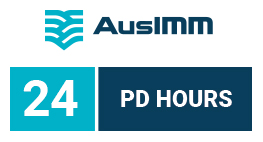Risk Analysis and Mineral Resource Classification | Training course
Learn the techniques of conditional simulations applied to uncertainty assessment and how to use them for resource classification.
Objectives
- Learn the theory and practice of the various techniques of conditional simulations applied to continuous and categorical variables.
- Learn how to process the simulation results to analyze the uncertainties in the grades and geological facies comprehensively.
- Discover the practical and theoretical aspects of the different methods of mineral resource classification. Compare their pros and cons.
Key Features
- Half of the course is devoted to methodological presentations, and the second half to practical exercises on real-life cases to deepen understanding of concepts. The focus is on illustrations and practical contributions of the covered concepts.
- Computer exercises with Isatis.neo and Isatis.
- Course material provided.
Who should attend
This course is aimed at geologists, engineers, and others seeking sound theoretical and practical knowledge of conditional simulations for mining applications.
Course content
- Reminders of linear and non-linear geostatistics and their role in assessing uncertainty: dispersion variance, change of support, information effect, etc.
- Full review of the conditional simulation methods available in Isatis.neo and Isatis:
– Simulations of continuous variables: Turning Bands and Direct Block Simulations.
– Simulations of categorical variables: Sequential Indicator Simulations. - Assessment of the uncertainties on estimated recoverable resources.
- Review and comparison of the different resource classification methods: different criteria related to kriging and drilling mesh, confidence intervals calculated on simulations, Spatial Sampling Density Variance.
- Case studies: assessing risk and uncertainty of estimated grades.
Prerequisites
As the course refers to advanced geostatistical concepts, it is highly recommended that attendees have a solid knowledge of variography and kriging.


